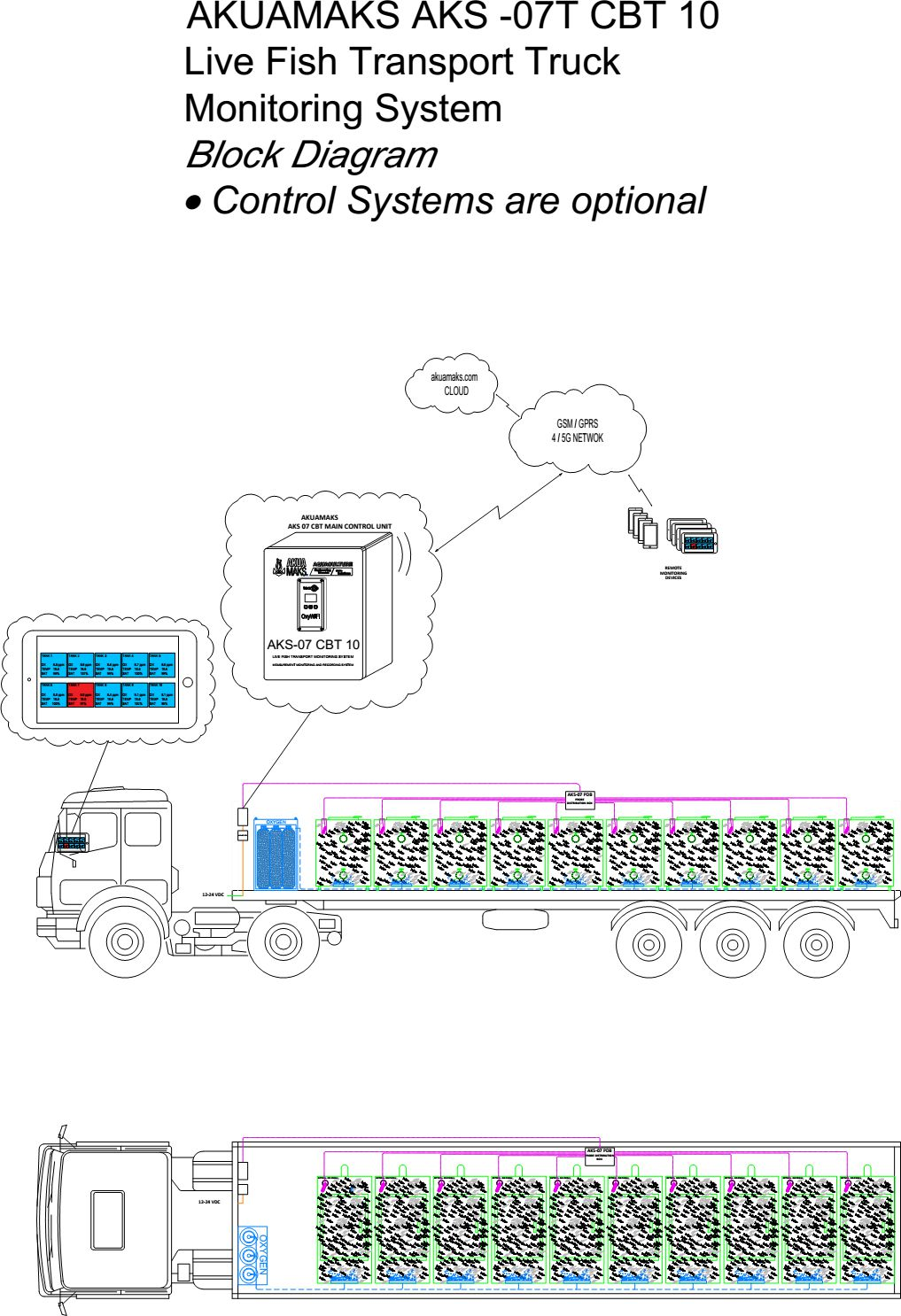
Live Fish Transport Truck Monitoring Systems
MONITORING SYSTEMS IN LIVE FISH TRANSPORTATION
Land-based and sea vehicles juvenile, smolt, and market-size fish transported alive have an important commercial value. Controlling the dissolved oxygen level and keeping the dissolved oxygen value within safety limits during shipment is of vital importance in preventing fish loss. These fish, which have a certain commercial value, constitute the first step of the aquaculture process that will last until harvest, in the facility where they will be placed after transportation. Losses incurred in this process directly affect the efficiency and success of the business.
Every tank with live fish has an optical probe that measures dissolved oxygen and temperature. The values measured here are instantly transmitted via Wi-Fi network to the tablet screen in the driver's cabin on land vehicles and in the control cabin on sea vessels. By transferring the measurement data to the cloud via the data line on the tablet, authorized users from anywhere in the world, with a smartphone, tablet, or computer with an internet connection, can connect to their system's page and monitor the instantaneous values remotely. The location of the vehicle can be tracked instantly with the location transmitter in the system.
With the control equipment, and software that can be added to the monitoring system, when the dissolved oxygen level in the tank falls below the limit value, oxygen is supplied to the limit values by a solenoid valve-equipped oxygen diffuser fed by the oxygen line. When the limit value is reached, the system automatically closes the solenoid valve. In this way, oxygen is saved and the optimum dissolved oxygen level in the tank is controlled. By defining the lower and upper oxygen measurement alarm values, an alarm message is immediately sent to the relevant personnel when the alarm value is measured. In this way, the transport staff is enabled to apply alarm management and intervene in the tank immediately.
SENSORS
Measuring sensors that are resistant to corrosion and equipped with optical technology are used. These sensors transmit the measurement results to the main processor. In this technology, which is resistant to severe conditions, the sensors work efficiently for many years with regular control and sensor cleaning.
DATA TRANSMISSION
Software and hardware have been developed that allow instant tracking of measurement results from sensors in the vehicle via transmission lines, instant tracking via the cloud, emergency management, access to past records and alarm situations, graphical analysis and data recording output. In these systems, unlike hand-held measuring devices, there are no disadvantages such as calibration problems, the need for personnel use, dependence on meteorological conditions and the inability to make measurements in bad weather conditions. It is a technology that does not depend on humans, continuously measures in all weather conditions and transmits the results, thus allowing a traceable live fish transfer.
ANALYSIS OF CURRENT AND HISTORICAL DATA EVALUATION
It allows monitoring of instantaneous values and control of changing status. Stock loss, oxygen loss can be prevented, and operating losses can be prevented. Data control is provided on strategically important issues such as transfer plan and oxygen consumption planning.


